Research
Bedömning av degraderade
2015:50
SSM:s perspektiv
Bakgrund
ASCET är ett internationellt forskningsprojekt som är initierat av WGIAGE1
OECD2 /NEA3 . WGIAGE Concrete subgroup är en arbetsgrupp inom
OECD/NEA vars uppgift är att behandla frågor gällande • upprätthållandet av integriteten av betongstrukturer,
• förslag på generella principer för att på optimalt sätt hantera utmaningar för integriteten, i synnerhet vad gäller åldrande av betongstrukturer.
Syfte
Syftet med forskningsprojektet är att skapa en grund för allmänna rekom-mendationer gällande hantering av åldersrelaterade betongdegraderingar vid kärntekniska anläggningar. Varje deltagare i ASCET-projektet bidrog med en skriftlig rapport om sin forskningsverksamhet gällande betongde-gradering.
Resultat
Denna rapport är det svenska bidraget till ASCET-projektet. Rapporten ger en överblick av de senaste forskningsaktiviteterna som genomförts av Scanscot Technology AB som författat det svenska bidraget. Rapporten föreslår även framtida forskning inom området nedbrytningsmekanismer för materialet betong baserat på tidigare rekommendationer från forskning och driftserfarenheter inom svensk kärnkraftsindustri. Rapporten innefattar även degraderingar som uppstår p.g.a. korrosion av stål ingjutet i betong. En sammanfattande rapport innehållande samtliga deltagares rapporter och en slutsats från projektet kommer att publiceras av OECD/NEA
Behov av ytterligare forskning
Ytterligare forskning behövs bl.a. inom området oförstörandeprovning (OFP) för att kunna bestämma statusen av ingjutna spännkablar och tät-plåtar.
Project information
Kontaktperson SSM: Sofia Lillhök Referens: SSM2015-1013
2015:50
Author: Björn Thunell
Scanscot Technology AB, Lund
SSM 2015:50
This report concerns a study which has been conducted for the Swedish Radiation Safety Authority, SSM. The conclusions and view-points presented in the report are those of the author/authors and do not necessarily coincide with those of the SSM.
Content
Sammanfattning ... 3
Executive summary ... 5
List of Abbreviations ... 7
1. Introduction ... 9
1.1. Swedish reactor containment operational experiences ... 10
1.2. Previously identified Swedish research needs relating to concrete degradation ... 11
2. Material aspects and laboratory material testing ... 13
2.1. CONMOD material testing project at the Barsebäck NPP ... 13
3. Material modeling ... 15
4. Laboratory structural components testing – destructive testing 17 5. Structural modeling ... 19
5.1. Benchmark projects regarding pressurization events of concrete containment structures ... 19
6. Non-destructive testing and in-situ condition assessment ... 23
6.1. The CONMOD project ... 23
6.2. The CONSAFESYS project ... 25
6.3. In-situ testing and determination of concrete properties for structural capacity calculation of anchor systems at nuclear facilities28 6.4. Loss of prestress in reactor containments ... 28
7. Structural acceptance criteria for structures with pathologies/degradation mechanisms ... 29
7.1. Recent related research projects ... 29
8. Structural repair ... 31
9. Conclusions and suggested path forward ... 33
2
Sammanfattning
Många kärnkraftverk runt om i världen närmar sig just nu skedet långtidsdrift av sin operativa fas. Dessutom har flera kärnkraftverk nyligen genomfört uppgraderings- och effekthöjningsprojekt, med omfattande underhållsarbete inklusive utbyte av komponenter som är viktiga för säkerheten. Som ett resultat har hantering av åldrande seglat upp som en av de viktigaste frågorna i kärn-kraftsindustrin.
Programmet ASCET (Assessment of Nuclear Structures Subject to Concrete Pathologies) initie-rades av OECD/NEA/CSNI under 2013 och är ett internationellt forskningsprogram inriktat på nedbrytningsmekanismer av betong i kärntekniska anläggningar. Projektet syftar till att skapa en grund för allmänna råd för hantering av åldrandefrågor för betongkonstruktioner i kärntekniska anläggningar som utsätts för patologier (materialnedbrytningsmekanismer). Den typ av utredning-ar som krävs för att förstå och utvärdera betongens förhållanden bestäms av vutredning-arje medlemsland baserad på forskningsbehov och identifierad känslighet för skador.
Denna rapport ger en översikt över några av de senaste forskningsaktiviteterna som genomförs av det oberoende svenska konsultföretaget Scanscot Technology, i samband med olika typer av be-dömningar av betongkonstruktioner (numeriska, förstörande, icke-förstörande). Dessutom föreslås vägen framåt inom detta forskningsområde (nedbrytningsmekanismer för materialet betong), med stöd av tidigare rekommendationer från forskning och driftserfarenheter inom svenska kärnkrafts-industrin. Föreliggande rapporten skapas som en del av OECD/NEA/CSNI CAPS ASCET-programmet.
4
Executive summary
Many Nuclear Power Plants around the world are at the moment approaching, or in, their Long Term Operation stage of their operational phase. In addition, several NPPs have recently been carrying out uprate and life extension projects and comprehensive maintenance work including the exchange of components important to safety, in order to extend their lifetime. As a result, ageing management has emerged as one of the main concerns of the nuclear community. The ASCET (Assessment of Nuclear Structures Subject to Concrete Pathologies) program was initiated by the OECD/NEA/CSNI in 2013 and is an international research program targeted at degradation of concrete in nuclear facilities. The project aims to create a basis for general recom-mendations regarding management of ageing issues in nuclear facilities exposed to concrete pa-thologies (material degradation mechanisms). The type of investigations necessary to understand and evaluate concrete degradations are determined by each member country based on research needs and damage sensitivity.
This report provide an overview of some of the recent research activities carried out by the inde-pendent Swedish consultancy company Scanscot Technology, related to various types of assess-ments of concrete structures (numerical, destructive, non-destructive). Furthermore, the suggested path forward in this research area (concrete material degradation mechanisms), supported by pre-vious research recommendations and operational experiences of the Swedish nuclear industry, is also included. The report is created as a part of the OECD/NEA/CSNI CAPS ASCET programme.
6
List of Abbreviations
AAR Alkali Aggregate Reaction
AMP Ageing Management Plan
ASCET Assessment of Nuclear Structures Subject to Concrete Pathologies ASR Alkali Silica Reaction
BAM Bundesanstalt für Materialforschung und -prüfung BWR Boiling Water Reactor
CAPS CSNI Activity Proposal Sheet
CONMOD Concrete containment management using the finite element method combined with in-situ non-destructive testing of conformity with respect to design and construction quality
CONSAFESYS Plant management system for determining the condition and residual lifetime of concrete containments
CRP Co-ordinated Research Programme/Projects CSNI Committee on the Safety of Nuclear Installations GPR Ground Penetrating Radar
HECR High Energy Computed Radiography
IE Impact Echo
LOCA Loss of Coolant Accident
LTH Lund Institute of Technology (Swe: Lunds Tekniska Högskola)
LTO Long Term Operation
MASW Multichannel Analysis of Surface Waves
NDE Non-destructive Evaluation
NDT Non-destructive Testing
NEA Nuclear Energy Agency
NPP Nuclear Power Plant
OECD Organization for Economic Co-operation and Development
RTM Reverse Time Migration
PWR Pressurized Water Reactor
SSC Systems, Structures and Components
1. Introduction
This report provide an overview of some of the recent research activities and commercial projects carried out by the independent Swedish consultancy company Scanscot Technology, related to various types of assessments of concrete structures (numerical, destructive, non-destructive). The report is created as a part of the OECD/NEA/CSNI CAPS ASCET initiative, and content in this report is presented from a Swedish perspective. The preparatory work by Scanscot within ASCET is currently financed by the Swedish Radiation Safety Authority (SSM).
The goal of the ASCET program is to organize and implement an open research activity aiming at establishing and validating evaluation techniques, and demonstrating adequate structural perfor-mance of existing nuclear facilities during their entire lifetime.
This report is divided into the chapters: 1. Introduction
2. Material aspects and laboratory material testing 3. Material modeling
4. Laboratory structural components testing – destructive testing 5. Structural modeling
6. Non-destructive testing and in-situ condition assessment
7. Structural acceptance criteria for structures with pathologies/degradation mechanisms 8. Structural repair
9. Conclusions and suggested path forward
The main objective for the majority of the work conducted by Scanscot has been structural as-sessments related to maintaining the safety criteria for nuclear reactor containments.
In order to define research needs for non-destructive assessment methods, for Swedish conditions, a compilation of publically known operational experiences related to reactor containments (short form in section 1.1) has been put together within the ongoing CONSAFESYS project (chapter 6). In general terms, all safety related operational experiences of nuclear facilities in Sweden should be publically known. In relation to international needs, as the design of Swedish reactor contain-ments were heavily influenced by the reactor technology in the USA, the Swedish research needs conforms to a large extent to needs in the USA, with some deviations.
For some projects, carried out by Scanscot, a decommissioned nuclear power plant in southern Sweden has been used as a mockup facility for destructive and non-destructive testing. Some of these activities are briefly described in this document. The possibility to test assessment method or conduct other types of studies on this decommissioned NPP remains, and future projects may also benefit from using this advanced mockup.
For reader completeness outside of the ASCET program, a summary of the 16 listed ASCET in-ternational participant teams interest for the various degradation mechanisms, following a ques-tionnaire, is presented in Table 1.1.
10
Table 1.1 ASCET participant teams interest for various degradation mechanisms.
Index Degradation mechanism Number of participants
1 ASR 10 2 Sulfate attack 5 3 Rebar corrosion 5 4 Irradiated concrete 4 5 Freeze-thaw 4 6 Carbonation 4 7 Chloride interaction 3 8 Shrinkage 3 9 Abrasion-Erosion 2 10 Leaching 2 11 Cracking due to the heat of hydration 2
12 Boric-acid attack 1 13 Geochemical Dissolution 1 14 Bio-Degradation 1
1.1. Swedish reactor containment operational experiences
Publically available operational experiences show very few publically known occurrences of concrete degradation mechanisms in Swedish reactor containments. This is said not considering corrosion of embedded steel components as concrete degradations. Most issues reported to SSM concern various types of corrosion problems, often in conjunction with steel liners or pool liners (BWRs). Some Swedish operational experiences of reactor containments reported to SSM over the years include (in total 12 nuclear reactor units, items below in no particular order):
Corrosion of liner toroid
Leaking middle slab electrical wire penetration seal Degraded middle slab seal
Leaking new welds
Damaged prestressing tendons Leaking liner toroid
Anchor head failure during construction Leaking middle slab seal
Leaking lower liner toroid
Leaking condensation pool bottom liner Leaking condensation pool wall liner Water leakage and liner delamination Crumbled concrete on containment outside Liner leakage at welds
Liner hole left at construction Leakage at bottom of base slab
Liner corrosion at penetrations due to grouting voids Leaking upper pool steel liner
Cast-in foreign material
Very few instances of classical concrete pathologies (not counting corrosion problems) have been reported for the concrete reactor containments in Sweden. However, it is important to note that
occurrences of minor concrete degradations, not deemed of direct safety significance by licensee staff, may not have been reported to the regulator. A brief overview of known concrete patholo-gies is provided below:
One documented instance of confirmed ASR is available in Sweden, at the decommis-sioned Barsebäck 2 NPP unit.
One instance classified as concrete crumble, at the exterior surface of a PWR unit, is also known. One PWR unit had exterior problems at one occasion (fragments of concrete were about to break of underneath the dome ring beam), which was detected during non-regular inspection initiated by the regulatory body.
Occurrences of local concrete surface cracking has been identified in some instances.
1.2. Previously identified Swedish research needs relating to
concrete degradation
In addition to the operational experiences listed above, issues identified in past research limited to concrete degradations, applicable to Swedish reactor containments, are listed below:
The need for (destructive and non-destructive) material condition assessment methods of concrete and embedded steel components, suited for use in nuclear power plant struc-tures, is identified in [1].
The potential long-term effects of high local concrete temperatures around some penetra-tions in reactor containments during normal operation is identified in previous national research work [2]. This issue remains unresolved so far, but may be structurally im-portant for most Swedish reactor containments in case of a LOCA accident.
The issue of potential effects of irradiated concrete is identified, for example in [1] and [3], but still unresolved. International activity is ongoing in this field.
2. Material aspects and laboratory material
test-ing
2.1. CONMOD material testing project at the Barsebäck NPP
Within the CONMOD project [4], a material testing project at the Barsebäck NPP [5] were con-ducted in 2005 with the aim to determine ageing process and mechanical properties of the reactor containment concrete. No material degradation was found in the core samples collected from the two Swedish reactor containments. However, a significant increase over time in compressive strength and elastic stiffness, due to the continued hydration process in the material, was conclud-ed. The relative humidity of the concrete in the almost one meter thick (with steel liner on one side) outer cylindrical wall was found to be very high, even after more than 30 years in operation (Figure 2.2).
Concrete material testing included multiple instances of core sampling and laboratory tests (at 2 different laboratories) of: Strength, Young´s modulus, Degree of hydration, Carbonation depth, Chloride content, Moisture profile, Micro structure and Porosity.
Figure 2.1 Concrete material coring and testing at the Barsebäck NPP during the CONMOD pro-ject.
3. Material modeling
No research related to material modelling of concrete degradation mechanisms is carried out by Scanscot at present time.
4. Laboratory structural components testing –
destructive testing
No research related to destructive testing of structural components is carried out by Scanscot at present time. Related activities and participation in international benchmarks are described in chapter 5.
5. Structural modeling
Numerical simulations of nuclear type of structures is a common task in many of the consultancy assignments carried out by Scanscot. Many assignments include assessments of structural utiliza-tion and leak tightness of reactor containments. This secutiliza-tion is limited to a descriputiliza-tion of research projects only, excluding commercial projects.
Numerical simulations are mainly carried out as whole-structure models (usually structural as-sessments in some form), or as part-structure models for wave propagation simulations. The Finite Element software ABAQUS is mainly used as a tool for this. As a mean of methodology and numerical tools validations, participation in international benchmark projects has traditionally been a vital part of company activities. Participation in international benchmark projects include: ISP 48, SPE 3, VERCORS, IRIS (impact), SMART 2008 (seismic), SMART 2013 (seismic) and CASH (seismic). Below a short form description of benchmark projects regarding pressurization events of concrete containment structures are presented in sections 5.1.1 to 5.1.3.
5.1. Benchmark projects regarding pressurization events of
concrete containment structures
5.1.1. International standard project 48 (ISP 48)
The ISP 48 international benchmark project focus was on global response and final failure for a prestressed concrete containment mockup tested for pressurization (see [7]).FE-modelling were used by the participants in this project to predict the response at load levels beyond design. In Figure 5.1 the principal layout of the FE-model used by Scanscot is shown. The concrete was defined with solid element and the steel components with shell or bar elements. Non-linear mate-rial models were used to describe the matemate-rial of both concrete and steel components.
20
Figure 5.1 Global FE-model used for the ISP 48 project. Elements for concrete, reinforcement, tendons and steel liner are separated in the figure for illustration purpose.
Important conclusions regarding modelling, analysis technique, concrete models, etc. where drawn in this project. Figure 5.2 show results regarding the predictions of final failure mode which were concluded to be initiated by a rupture in the horizontal tendons.
Figure 5.2 Final failure for the ISP 48 containment mockup. Prediction and actual failure.
5.1.2. Standard Problem Excise 3 (SPE 3)
The SPE 3 project can be seen as a continuation of the ISP 48 project, with focus on detailed be-havior and containment leakage, where the final objective is to estimate leak rates for different pressure levels. The main focus in this project was on local containment behavior. A similar non-linear global FE-model as used in the ISP 48 project (see above) was also used in the SPE 3 pro-ject together with several local FE-models. Important conclusions regarding concrete cracking, prestress distribution, local liner failure behavior, etc. were drawn in the project. An example of
results from the SPE 3 project is given in Figure 5.3, where the evaluated concrete cracking in the containment cylindrical wall is shown for three different internal pressure levels.
Figure 5.3 Result, concrete cracking in hoop direction (cylindrical wall). Gray color indicates concrete cracking (Pd = design pressure).
5.1.3. VERCORS
The VERCORS project is an ongoing round robin benchmark project, organized by the French power company EDF. The main feature of the project is an experimental mockup of a reactor containment at 1/3 scale. The physical test period is from spring 2015 to 2021. The prestressed containment mockup has bonded tendons and no steel liner. The numerical model used by Scans-cot will be according to the detailed 3D concept previously verified within the ISP 48 project. The main project objectives are to study:
The early age behavior
Pressurization to 5.2 bar (annually)
Leak tightness under the effect of aging (aging effects ~9 times faster due to scale ef-fects)
6. Non-destructive testing and in-situ condition
assessment
6.1. The CONMOD project
The CONMOD [4] project was active during the years 2002-2005, and was initiated to establish a methodology for a subset of what today is called a generic AMP, for the ageing reactor contain-ments of the Swedish nuclear fleet. The methodology would enable determination of current structural capacity, identification of defects and deterioration, estimation of remaining safe life-time, and optimization of maintenance and safety-enhancing actions. The purpose was to maintain required safety criteria during the entire service life. See Figure 6.1 for illustration.
As a demonstrator, the decommissioned NPP Barsebäck were used in the structural assessments. In the assessment of structural margins, considering actual structural conditions of reactor con-tainments, a combination of testing and numerical simulations were used. In validating non-destructive results both complementary non-non-destructive test methods, design documentation (de-sign drawings and other documents), construction methods and documentation (pictures, docu-ments and memories), and complementary destructive testing were used at the Barsebäck NPP. Identified critical sections and structural components, setting the overall capacity of the contain-ment according to the safety criteria (leak-tightness and load carrying ability), was detected via numerical simulations. Problem areas may differ depending on the design of the NPP, but prob-lems with degraded concrete were concluded to, in general, often occur at structural discontinui-ties such as at connections between structural elements or around openings and hatches. The origin of structural degradations were identified to be from construction flaws, and poor work-manship, which resulted in validation of as-built compliance with design to emerge as an im-portant step in the condition assessments.
24
Figure 6.1 Maintaining required safety criteria during the entire service life of a reactor contain-ment, taking structural deviations and degradations into account.
In the structural assessment of the reactor containment several sources of information, beside numerical simulations, were evaluated (represented by Figure 6.2):
Background documentation from the construction of the containments. Core samples and various material properties from destructive testing.
Non-destructive test methods including: HECR IE, MASW, SASW, MIRA, UPE, UPV, Radar and Cover meter.
Figure 6.2 Structural assessment background information, including design and construction doc-umentation, core sample information, and non-destructive evaluations.
Some general conclusions from the CONMOD project include:
It was not possible to define a general life-expectancy of containments. Critical local details set over-all capacity.
All concrete structures are unique and cannot be described on the basis of drawings and memories. If you want to know - You must look.
Actual structures deviates from design drawings.
The ageing (of concrete) can have both positive and negative effects.
The observations made (deviations) at NPPs were workmanship and design detail-related. No dependent deterioration mechanisms were identified. However, time-dependent changes were identified.
6.2. The CONSAFESYS project
The CONSAFESYS project is an ongoing project since 2009, which is about to be finalized this year. The project is financed by nuclear plant owners in Sweden, SSM, the Swedish nuclear fuel repository (SKB) and ORNL. One important objective of this research project is to aid in the development of promising non-destructive quality assurance and inspection methods for thick concrete structures (reactor containments). The final purpose being to identify non-destructive testing methods that can be implemented in the quality assurance process during construction, in the check-up of as-built compliance with design, as well as a tool for enhancing the in-service inspection methods. The inclusion of as-built compliance with design is an important task, as several operational experiences in fact has occurred due to deviations from intended design. The scope of the CONSAFESYS project include the CONMOD methodology, utilizing a combi-nation of non-destructive assessment techniques and numerical simulations, for planning, execu-tion, and evaluation of NDT of concrete containments. The aim of the system is to determine a Profile of the containment structure to keep track of the present, and to predict the future condi-tion of the structure. All factors related to geometry, detailing, condicondi-tion and ageing together de-scribe the Profile of the structure:
The as-built compliance with design (AC) The condition and quality (CQ)
The ageing processes (A)
The main topics to be addressed within the CONSAFESYS project are: 1. Validation of NDT methods at realistic circumstances
2. Development of numerical models
3. Practical implementation at sites in operation
4. Determine the possibilities and limitations of seismic NDT methods
One main activity of the project is demonstrations of state-of-the-art integrity assessment tech-niques for concrete structures at the reactor containment of the decommissioned Barsebäck NPP. Testing and evaluations were in this context conducted by a research team from Lund Technical Institute (LTH) and staff from the German Federal Institute for Materials Research and Testing (BAM), in October 2014.
An additional activity has been to summarize reactor containment operational experiences in Sweden, in order to provide the basis for defining research needs within the NDT area.
An example of a focus area is the possibilities to carry out non-destructive status assessments of grouted prestressing tendons. The general consensus in Sweden is that unbonded tendons are sufficiently studied, but further knowledge of condition assessment of grouted prestressing ten-dons is needed. Within the current project, status assessments on grouted tendon ducts were lim-ited to the possibilities to detect grouting voids inside tendon ducts using NDE.
6.2.1. Testing possibilities at the decommissioned NPP (Barsebäck)
26
6.2.2. BAM state-of-the-art measurements at Barsebäck NPP
As a mean of testing the possibilities and limitations of selected non-destructive methods (GPR, US, RTM) on actual NPP units (Barsebäck), the German material testing institute BAM was en-gaged as one part of the CONSAFESYS project. The measurements are also seen as a modern continuation of the work carried out more than 10 years ago within the CONMOD project, where a wide range of available non-destructive testing methods for concrete structures were tested at the same NPP units. This is particular interest as documented, and publically available, practical experiences using these investigation methods on actual reactor containments are extremely scarce, in contradiction to testing on reference laboratory specimens, which are somewhat publi-cally available, for example [8]. See Figure 6.3, which exemplify the measurements at the Barsebäck NPP.
As destructive measures are possible at the available decommissioned NPP units, the possibility to implement defects into the structure that was to be investigated by BAM was used. For this pur-pose a few cores were drilled from the inside of the reactor containment, see Figure 6.4. Meas-urements were consistently done from the outer surface of the containment, as installations on the inside poses an obstacle.
The information from the measurements are currently being evaluated and also compared to draw-ings, previous information (HECR images) and pictures from the construction phase of the reactor containment.
a) b) c)
Figure 6.3 GPR measurement of reactor containment pilaster with reinforcement and tendons. a) Cut at depth 5-7 cm. b) Cut at depth 13-17 cm. c) Picture from construction, prior to casting.
a) b)
Figure 6.4 Implemented defects in the reactor containment, in the form of drilled cores from the inside to the steel liner. a) Picture of cores drilled. b) Drilled cores (red color) in relation to hori-zontal and vertical tendon ducts.
6.2.3. The MASW application developed by researchers at LTH
A non-destructive assessment method further developed by a LTH research team is the method called Multichannel Analysis of Surface Waves (MASW), which in its basic form aim at material characterization (elastic properties as mean values over the section) and thickness estimation [9]. The method differ from all current other methods (for instance IE) as predictions are possible without assuming any material parameters. The method is based on Lamb waves, and is (just as IE) limited to plate-like structures. The method is developed and validated through both numerical simulations, and physical testing.
One potential application area of this method is detection of weak (abnormal) concrete sections, and determination of the evolution over time. A current Ph.D. project [10], initiated by the CONSAFESYS project, has been investigating fundamental wave propagation issues related to the MASW application and IE, as well as increased accuracy using polarization of the S1-ZGV mode (zero group velocity of the first symmetric plate mode), in the past 2 years, but is now fo-cusing on predicting material property changes over the depth of the investigated concrete wall/slab. The method is a relatively fast and low-cost method, requiring a data acquisition sys-tem, an accelerometer and a hammer, see Figure 6.5. Both software and hardware developments are currently pursued.
As a mean of testing the possibilities and limitations of the method on actual NPP units, MASW was tested at Barsebäck during the fall of 2014, as one part of the CONSAFESYS project. In-depth evaluations from these measurements are still to be made.
28
a) b)
Figure 6.5 Figure a) MASW method implementation, using one moving source and one stationary receiver to record a multichannel data record [9]. Figure b) Measured data in the form of phase velocity as a function of frequency cloud plot to be fitted to Lamb wave dispersion curves.
6.3. In-situ testing and determination of concrete properties for
structural capacity calculation of anchor systems at nuclear
facilities
An ongoing, soon to be finalized, project concern in-situ testing and determination of concrete properties for structural capacity calculation of anchor systems at nuclear facilities. The work provides an overview of various factors which are important to consider in testing and evaluation of concrete strength parameters. This project is financed by the Swedish nuclear regulatory body (SSM).
Anchoring to concrete are widely used in all Swedish nuclear power plants. The anchoring often supports important systems and components in the nuclear facilities, as pipe systems and lifting devices. It is common that the capacity of the anchor systems has to be re-evaluated when loads and other conditions are changed. When an existing structure is re-evaluated an important issue is to determine the material parameters in a correct and stringent way. The capacity for concrete fasteners is strongly connected to the tensile strength of the concrete. In-situ testing of compres-sion strength should therefore be supplemented with tensile strength testing (splitting tensile test). It is also concluded that indirect testing methods (non-destructive) could be important when as-sessment of anchor systems are considered. The anchoring systems are spread over large areas in the structure and indirect testing methods could be helpful to generalize results from direct testing.
6.4. Loss of prestress in reactor containments
Problematics related to time dependent changes of concrete (creep and shrinkage) when being used in a prestressed reactor containment structure, has previously been studied in several re-search projects, where of one is [6]. Conclusions from this project include deviances in actual (measured) loss of prestress (less losses in Swedish reactor containments) from original design assumptions.
7. Structural acceptance criteria for structures
with pathologies/degradation mechanisms
No research is carried out by Scanscot within the field of structural acceptance criteria for struc-tures with degradation mechanisms at present time.
7.1. Recent related research projects
7.1.1. Design Guides for Nuclear Civil Structures (Swe: DNB)
However, Scanscot has recently developed national design regulations for nuclear civil structures in Sweden, DNB [11], initiated by the Swedish nuclear industry and financed by the industry and the nuclear regulatory body (SSM), and work within the field of structural acceptance criteria for structures experiencing degradation mechanisms is of general interest.
7.1.2. Anchorage capacity in sound concrete
Recently finished work within the field of anchorage capacity on sound concrete (not affected by degradation mechanisms) include the response of headed anchors in non-reinforced and rein-forced concrete structures, see Figure 7.1 for overview illustration, investigated by means of nu-merical simulations [12]. Several compositions of single anchor and anchor groups loaded in tension or shear were studied and successfully compared to physical tests. The methodology may be adjusted for cases including degraded concrete. This research project was financed by the Swedish nuclear regulatory body (SSM).
8. Structural repair
No research is carried out by Scanscot within the field of structural repair at present time. Howev-er, work conducted and conclusions drawn within this field is of general interest.
9. Conclusions and suggested path forward
As very few instances of classical concrete pathologies (not counting corrosion problems) have been reported to the Swedish regulatory body for the concrete reactor containments, this research area has so far had little national focus for these types of structures. For the nuclear structure ap-plications, concrete is always used in combination with steel, and corrosion problems will there-fore be included in this context.
From a Swedish perspective, research needs concerning reinforced concrete pathologies in nuclear reactors include, arranged in order of safety significance:
1. Corrosion in embedded steel components: Corrosion detection, or indications of pos-sible corrosion, in embedded steel components may be the single most important non-destructive evaluation task from the perspective of Swedish nuclear reactor contain-ments, according to operational experiences. Corrosion in reinforced concrete also place at the front among ASCET participant replies to the questionnaire summarized in Table 1.1. Specifically corrosion of steel liners and prestressing tendons are of particular inter-est from the view of the safety requirements. Continued research within the various as-pects of this field is therefore recommended.
2. High local concrete temperatures: The potential long-term effects of high local con-crete temperatures around some penetrations in reactor containments during normal op-eration may be structurally important for most Swedish reactor containments in case of some accidental loads (internal pressure from a LOCA, or pipe break near penetrations). Eventual long-term effects for the concrete material may be possible to observe at the Barsebäck units via analysis of core samples around penetration areas exposed to elevat-ed temperatures, and comparelevat-ed to selectelevat-ed reference locations away from penetration ar-eas.
3. Irradiated concrete: The issue of changed mechanical material properties of irradiated concrete may be of interest for Swedish reactors. International activity is ongoing in this field, but possibly some input using Barsebäck (or core samples from other Swedish re-actors) may be of interest.
It is also suggested that the regulatory body initiate a national survey project directed specifically at operational concrete degradation experiences at nuclear facilities. The reason being that histori-cally occurrences of minor concrete degradations, not deemed of direct safety significance by licensee staff, may not have been reported to the regulator.
10. References
[1] B. Brickstad, "Tillsyn och förutsättningar för långa drifttider av åldrande kärnkraftanläggningar, Utredningsrapport SSM 2010/659," Strålsäkerhetsmyndigheten, 2010.
[2] G. B. et al., "Utredning kring reaktorinneslutningar - konstruktion, skador samt kontroller och provning, SKI rapport 02:58," Statens Kärnkraftinspektion, 2003.
[3] Swedish Radiation Safety Authority, 2014:31, Degradering i betong och armering med avseende på bestrålning och korrosion, SSM, 2014.
[4] The CONMOD Project, CONMOD - Main Report, Force Technology (Scanscot, EDF, Barsebäck), 2002.
[5] Force Technology (Scanscot Technology), "Barsebäck NPP - Material testing project," 2005.
[6] P. Andersson, "Structural integrity of prestressed nuclear reactor containments, Doctoral Thesis," Division of Structural Engineering, Lund University, Lund, 2007.
[7] ISP-48, "International Standard Problem 48 Containment Capacity, Phase 1-3," OECD, 2005.
[8] H. W. et al., "Non-destructive Testing of Nuclear Power Plant Concrete Structures State of the Art Report," BAM Division 8.2, Berlin, 2013.
[9] N. Rydén, "Surface Wave Testing of Pavements, Doctoral Thesis," Department of Engineering Geology, Lund University, Lund, 2004.
[10] O. Baggens, "Non-destructive evaluation of plate-like concrete structures: elastic properties and thickness," Division of Engineering Geology, Lund University, Lund, 2015.
[11] Scanscot Technology AB, Dimensionering av nukleära byggnadskonstruktioner (DNB) 2014:06, Swedish Radiation Safety Authority, 2014.
2015:50 The Swedish Radiation Safety Authority has a comprehensive responsibility to ensure that society is safe from the effects of radiation. The Authority works to achieve radiation safety in a number of areas: nuclear power, medical care as well as commercial products and services. The Authority also works to achieve protection from natural radiation and to increase the level of radiation safety internationally.
The Swedish Radiation Safety Authority works proactively and preventively to protect people and the environment from the harmful effects of radiation, now and in the future. The Authority issues regulations and supervises compliance, while also supporting research, providing training and information, and issuing advice. Often, activities involving radiation require licences issued by the Authority. The Swedish Radiation Safety Authority maintains emergency preparedness around the clock with the aim of limiting the aftermath of radiation accidents and the unintentional spreading of radioactive substances. The Authority participates in international co-operation in order to promote radiation safety and finances projects aiming to raise the level of radiation safety in certain Eastern European countries.
The Authority reports to the Ministry of the Environment and has around 300 employees
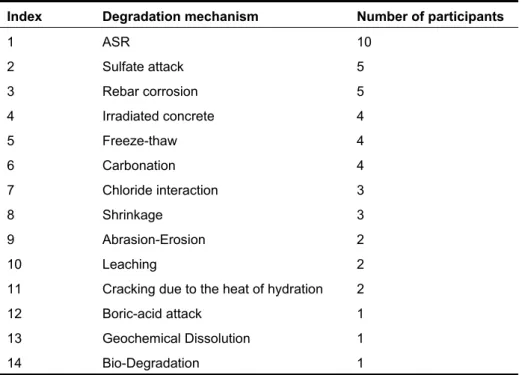
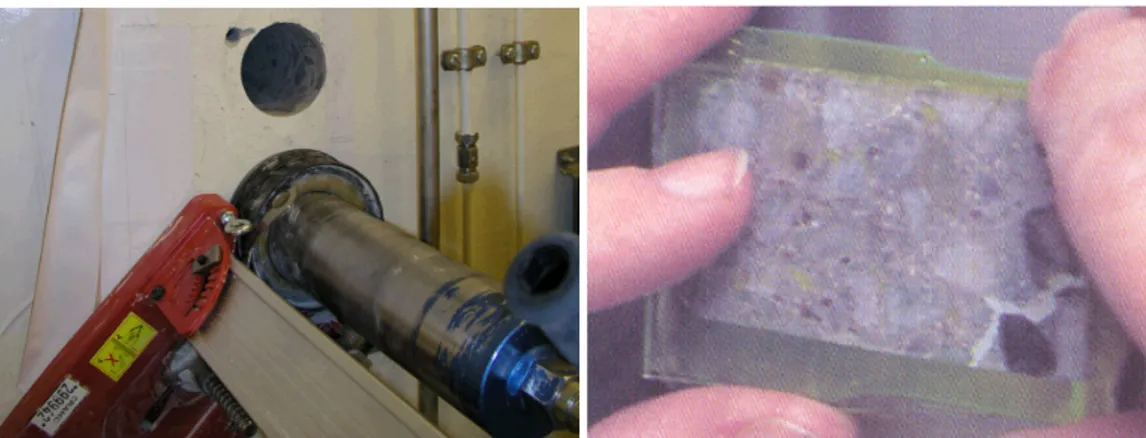
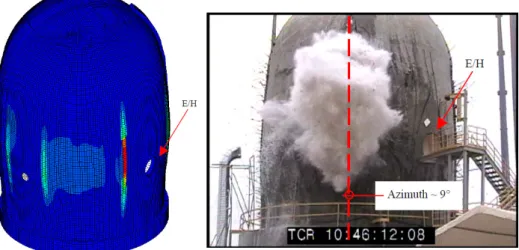
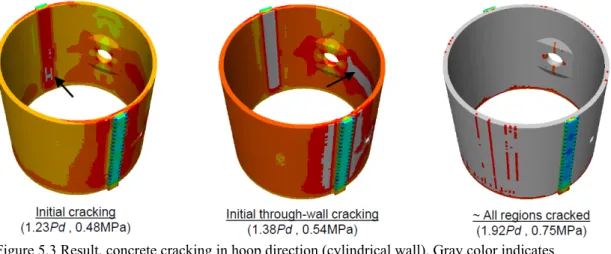
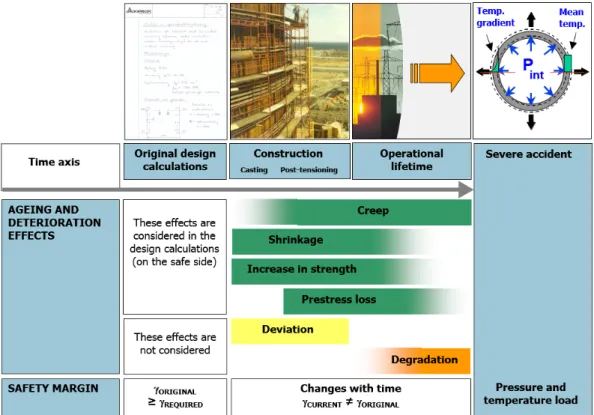
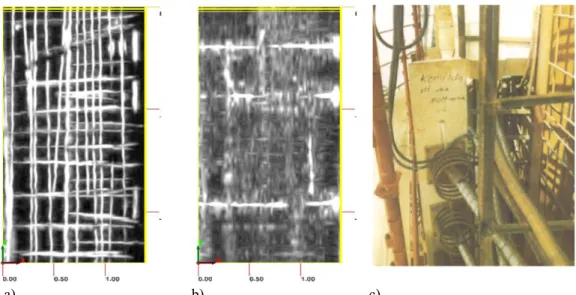

![Figure 6.5 Figure a) MASW method implementation, using one moving source and one stationary receiver to record a multichannel data record [9]](https://thumb-eu.123doks.com/thumbv2/5dokorg/3340309.18517/34.892.200.764.128.314/figure-figure-method-implementation-moving-stationary-receiver-multichannel.webp)